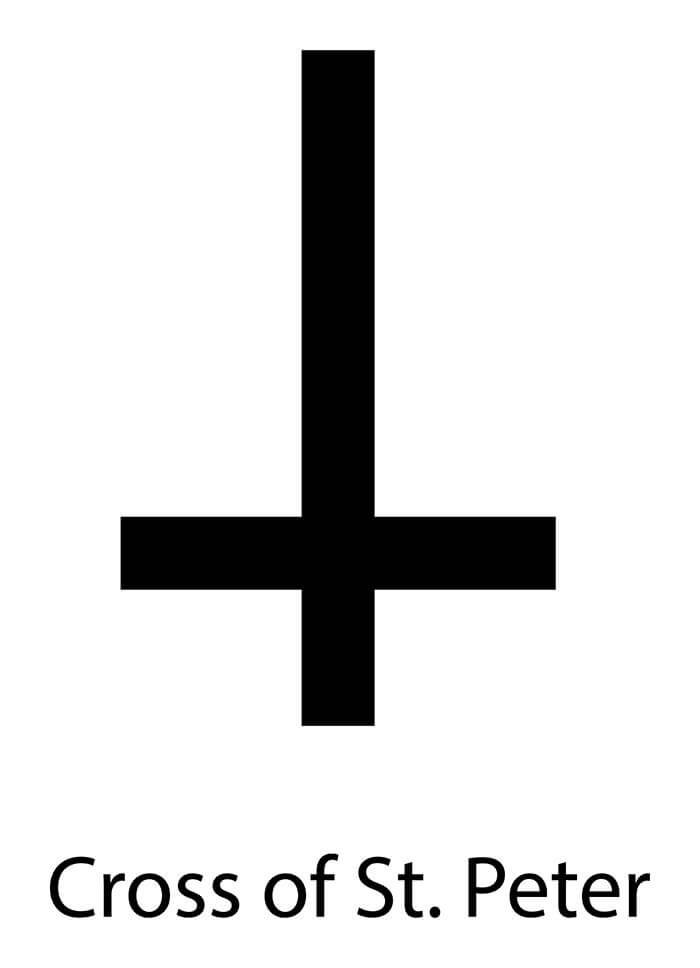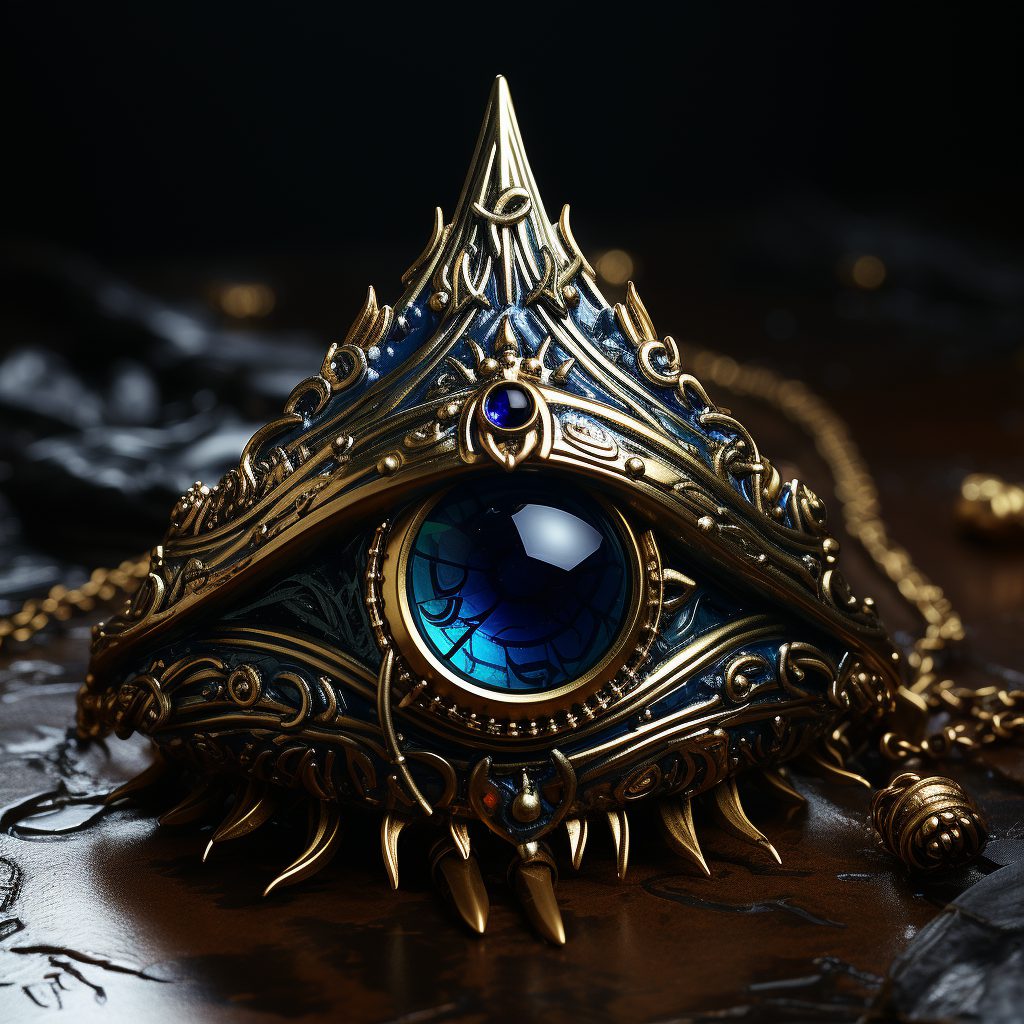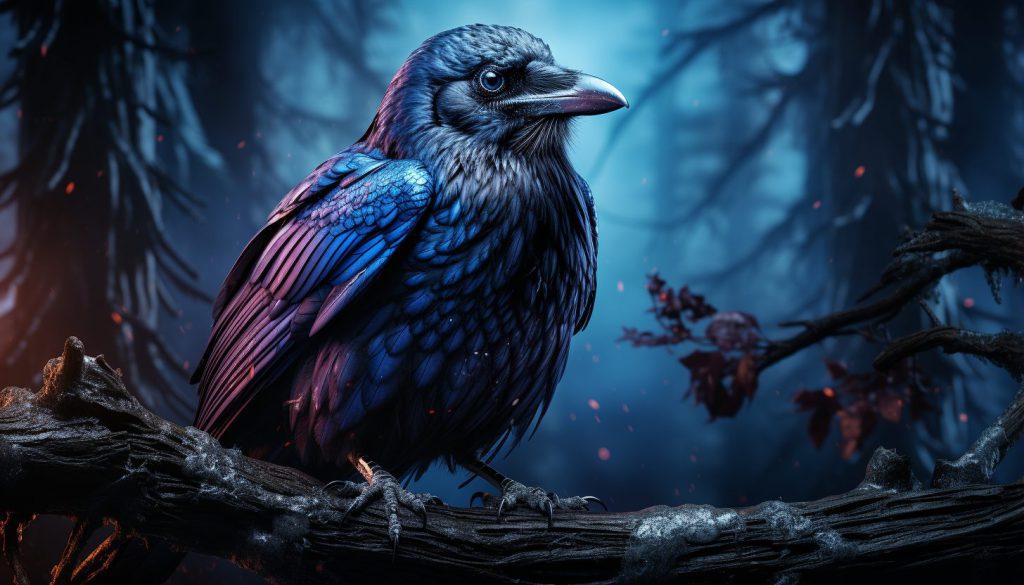| 1. Lucifer Sigil | 2. Brimstone Symbol | 3. Inverted Pentagram |
| 4. Inverted Cross | 5. Voodoo Doll | 6. Evil Eye (The Evil Eye Curse) |
| 7. Three Knocks | 8. Friday the 13th | 9. Swastika (Twisted Swastika) |
| 10. Chaos Symbol | 11. Raven | 12. Serpent |
| 13. Skull | 14. Baphomet | 15. Leviathan |
Delving into the Shadows: A Comprehensive Guide to Symbols of Evil
Embarking on a journey through the annals of history, one encounters the pervasive presence of symbols that have been used to represent various concepts and ideologies. In this context, we delve deep into the enigmatic world of evil symbols, which have held a significant place in human culture and have been instrumental in representing the darker aspects of humanity.
The Universal Symbol of Evil
The epitome of evil symbols, universally recognized and feared, is none other than the number “666”. This symbol, steeped in mystery and often associated with the malevolent forces, has a rich historical background and a significant presence in popular culture. Let’s unravel the layers of meaning and interpretations associated with this symbol.
| Aspect | Details |
|---|---|
| Historical Background | The number 666, also known as the number of the beast, has its origins in the biblical Book of Revelation. It has since been associated with the Antichrist and is considered a symbol of evil and negativity. |
| Significance and Interpretations | Over the centuries, various interpretations have emerged regarding the significance of 666. In numerology, it is often seen as a symbol of imperfection and in popular culture, it has been linked to demonic entities and malevolent forces. |
| Presence in Popular Culture | The symbol 666 has permeated popular culture, appearing in movies, music, and literature, often as a representation of evil and darkness. Its ubiquitous presence serves as a constant reminder of the human fascination with the concept of evil. |
Symbols with Religious and Mythological Origins
As we venture further, we encounter symbols deeply rooted in religious and mythological narratives. These symbols, often shrouded in mystery, have been both revered and feared throughout history. Let’s explore some of these enigmatic symbols and their significance in modern times.
Lucifer Sigil
The Lucifer Sigil, a symbol often associated with occult practices, has a rich tapestry of history and meanings. Let’s delve into its origins, symbolic meanings, and its presence in contemporary times.
- Origin and History: The Lucifer Sigil traces its roots to ancient scripts where it was used as a representation of the morning star, often associated with the figure of Lucifer in various mythologies.
- Symbolic Meaning: Over time, the sigil has come to embody rebellion, freedom, and enlightenment, representing the pursuit of knowledge and personal empowerment.
- Usage in Modern Times: Today, the sigil is a prominent symbol in modern occult practices, often used as a symbol of personal growth and the quest for enlightenment.
Brimstone Symbol
The Brimstone Symbol, deeply entrenched in biblical narratives, serves as a potent representation of both purification and destruction. Let’s explore its biblical references and its modern interpretations.
- Biblical References: Often found in biblical texts, the brimstone symbol is synonymous with divine judgment, representing both cleansing and destruction.
- Symbolic Representation: In various cultures, it has been used to symbolize purification processes, as well as a warning against evil forces.
- Modern Interpretations: In contemporary times, it is often seen as a symbol of protection against evil forces, used in various rituals and ceremonies.
Inverted Pentagram
The Inverted Pentagram, a symbol steeped in controversy and mystery, has been a focal point in various religious and occult practices. Let’s uncover its historical background and its association with Satanism.
| Aspect | Details |
|---|---|
| Historical Background | Originally a symbol of spirituality and the five elements, the inverted version has come to represent the subversion of traditional values. |
| Association with Satanism | The inverted pentagram has been adopted by modern satanic movements as a symbol of opposition to traditional religious values. |
| Modern Usage | Today, it is often used in various forms of art and culture, symbolizing a break from traditional norms and a celebration of individualism. |
Inverted Cross

The Inverted Cross, a symbol that has sparked both reverence and fear, has a rich history and a deep symbolic meaning. Let’s explore its origins and its presence in popular culture.
- Origin and History: Initially a Christian symbol representing the apostle Peter’s crucifixion, it has since been adopted by various groups to symbolize opposition to Christianity.
- Symbolic Meaning: Today, it stands as a symbol of defiance, often used to represent a rejection of traditional Christian values.
- Presence in Popular Culture: The inverted cross has found a place in popular culture, often used in music, movies, and art to represent a break from traditional norms and values.
Symbols with Cultural and Folklore Roots
As we traverse deeper into the realm of symbols, we encounter those that are deeply ingrained in cultural narratives and folklore. These symbols, often surrounded by an aura of mystique, have been a source of fascination and fear in various societies. Let’s delve into some of these captivating symbols and their roles in modern culture.
Voodoo Doll

The Voodoo Doll, a symbol deeply rooted in Haitian Voodoo, serves as a potent representation of the mystical practices associated with this belief system. Let’s explore its origins, symbolic representations, and its presence in contemporary culture.
| Aspect | Details |
|---|---|
| Origin in Haitian Voodoo | The Voodoo Doll finds its origins in Haitian Voodoo, a syncretic religion that blends West African, Native Taino, and Christian beliefs. The doll is used in various rituals, often as a means to influence the physical or emotional state of another person. |
| Symbolic Representation | Symbolically, the Voodoo Doll represents a connection between the physical and spiritual realms, acting as a conduit for energies and intentions. |
| Usage in Popular Culture | In popular culture, the Voodoo Doll has often been portrayed as a tool for malevolent practices, featuring prominently in horror films and literature as a symbol of fear and control. |
Evil Eye (The Evil Eye Curse)

The concept of the Evil Eye, a pervasive belief in many cultures, embodies the fear of malevolent glares causing misfortune or injury. Let’s delve into its historical background, protective measures, and modern beliefs surrounding this ancient symbol.
- Historical Background: The belief in the Evil Eye dates back to ancient civilizations, including the Greeks and Romans, where it was seen as a curse cast by a malevolent glare.
- Protective Measures: Throughout history, various amulets and talismans have been used to protect against the Evil Eye, including the popular blue eye-shaped amulets found in many cultures.
- Modern Beliefs: In modern times, the Evil Eye continues to be a prevalent belief, with many still using amulets and rituals as protective measures against potential curses.
Three Knocks
The phenomenon of Three Knocks, deeply rooted in folklore and superstitions, serves as a harbinger of ominous events in various cultures. Let’s explore its symbolic representation and the modern interpretations surrounding this mysterious phenomenon.
- Folklore and Superstitions: The phenomenon of hearing three knocks is often considered a sign of impending death or misfortune in various cultures, rooted in ancient beliefs and superstitions.
- Symbolic Representation: Symbolically, the three knocks represent a warning or a message from the spiritual realm, often seen as a communication from deceased loved ones or other entities.
- Modern Interpretations: In contemporary times, the phenomenon continues to be a source of fascination, often explored in literature and films as a symbol of the unknown and the mystical.
Friday the 13th
The date Friday the 13th, synonymous with superstitions and fears, has been a source of intrigue and speculation for centuries. Let’s delve into its origins, the superstitions surrounding it, and its presence in popular culture.
- Origins and History: The fear of Friday the 13th, known as paraskevidekatriaphobia, has unclear origins but is believed to combine the negative connotations associated with the number 13 and Fridays in various cultures.
- Superstitions and Beliefs: Many consider this day to be unlucky, avoiding important activities and decisions on this date due to the superstitions surrounding it.
- Presence in Popular Culture: Friday the 13th has found a prominent place in popular culture, inspiring a series of horror films and being a focal point in various works of fiction and media.
Symbols with Complex Histories
In this segment, we delve into symbols that bear complex histories, encompassing both positive associations and dark chapters of human history. One such symbol, which stands as a testament to the dual nature of symbols, is the Swastika. Let’s unravel the intricate history and the diverse perspectives associated with this symbol.
Swastika (Twisted Swastika)
The Swastika, a symbol that has traversed through various phases of human history, embodies a rich tapestry of meanings and associations. From its ancient positive connotations to its twisted version associated with Nazism, the Swastika has witnessed a transformation like no other symbol. Let’s explore its ancient history, the twisted version, and the modern perspectives surrounding this complex symbol.
| Aspect | Details |
|---|---|
| Ancient History and Positive Associations | Originally, the Swastika was a symbol of well-being and prosperity, used in various ancient cultures including Hinduism, Buddhism, and Jainism. It represented life, sun, power, and good luck. |
| Twisted Version and Association with Nazism | The Swastika underwent a dark transformation during the Nazi regime, where it was adopted as a symbol of Aryan identity and German nationalism, becoming synonymous with hatred, racism, and genocide. |
| Modern Perspectives | Today, the Swastika carries a dual significance. While it continues to be a sacred symbol in many Eastern cultures, it is also a painful reminder of the atrocities committed during the Holocaust in the Western world. Efforts are underway to reclaim its ancient positive meanings, but the path is fraught with challenges. |
The Swastika is believed to be one of the oldest symbols used by humanity, with its usage dating back to the Neolithic period. Its geometric simplicity and powerful symbolism have contributed to its widespread use in various cultures throughout history.
Chaos Symbol
The Chaos Symbol, a representation of disorder and unpredictability, has a rich history that spans various cultures and philosophies. Let’s delve into its origins, symbolic representations, and its presence in contemporary times.
| Aspect | Details |
|---|---|
| Origin and History | The Chaos Symbol, also known as the Symbol of Eight, originated in the works of Michael Moorcock, a British writer. It was initially used to represent the eternal battle between order and chaos in his literary works. |
| Symbolic Representation | Symbolically, the Chaos Symbol represents disorder, unpredictability, and the infinite possibilities that arise from chaos. It embodies the belief that chaos is not merely destructive but can also be a source of creation and innovation. |
| Usage in Modern Times | In modern times, the Chaos Symbol has been adopted by various movements and groups to represent a break from traditional norms and an embrace of new, unconventional paths. It is often seen in art, literature, and even in the realms of science and philosophy as a representation of the complex, unpredictable nature of the universe. |
Fun Fact: The Chaos Symbol has found a place in popular culture, notably in the realm of video games, where it is used to represent factions or forces that embody the principles of chaos and unpredictability.
Symbols with Animal Representations
Embarking further on our journey, we now turn our attention to symbols represented by animals. These symbols, often rich with historical and cultural significance, have found their way into various aspects of human life, including literature, art, and mythology. In this section, we focus on the Raven, a bird that has been both revered and feared throughout history.
Raven
The Raven, a bird shrouded in mystery and symbolism, has been a prominent figure in various cultures, representing a myriad of concepts ranging from death and evil to wisdom and protection. Let’s explore its historical significance, associations, and presence in literature and art.
| Aspect | Details |
|---|---|
| Historical and Cultural Significance | The Raven holds a significant place in various cultures. In Norse mythology, it is associated with the god Odin, symbolizing wisdom and knowledge. In Native American cultures, it is seen as a creator and a symbol of transformation. |
| Association with Death and Evil | Throughout history, the Raven has often been linked with death and evil, seen as a harbinger of death in various cultures. Its black plumage and scavenging habits have contributed to this dark association. |
| Presence in Literature and Art | The Raven has been a popular subject in literature and art, featuring prominently in works such as Edgar Allan Poe’s poem “The Raven”, where it is portrayed as a symbol of the narrator’s grief and loss. |
Despite its dark associations, the Raven is also seen as a symbol of intelligence and adaptability, known for its problem-solving abilities and complex social structures.
Serpent
The Serpent, a creature that slithers through the annals of history, has been a potent symbol in various cultures, embodying both reverence and fear. Let’s delve into its biblical references, symbolic representations in different cultures, and the modern interpretations that surround this enigmatic creature.
| Aspect | Details |
|---|---|
| Biblical References | In the Bible, the serpent plays a significant role, most notably in the story of Adam and Eve in the Garden of Eden, where it is portrayed as a deceiver that leads humanity into sin. It is also mentioned in other contexts as a symbol of cunning and deceit. |
| Symbolic Representation in Various Cultures | The serpent holds diverse meanings across cultures. In ancient Egypt, it was seen as a protector, while in Hindu mythology, it is often associated with the cycles of life, death, and rebirth. In Mesoamerican cultures, the serpent was revered as a god of wind and learning. |
| Modern Interpretations | In modern times, the serpent continues to be a symbol of danger and fear, often used in literature and films to represent evil forces. However, it is also seen as a symbol of transformation and healing, representing the shedding of old skin and renewal. |
Fun Fact: The medical field uses the Rod of Asclepius, a symbol featuring a serpent entwined around a rod, as a symbol of healing and medicine, showcasing the positive associations the serpent holds in certain contexts.
Skull

The Skull, a symbol that has transcended time, holds a prominent place in art, culture, and various symbolic representations. Often associated with death and evil, it also embodies deeper meanings and nuances. Let’s explore its symbolism in art and culture, its dark associations, and its usage in modern times.
| Aspect | Details |
|---|---|
| Symbolism in Art and Culture | The skull has been a potent symbol in art and culture, often used to represent the transient nature of life. In art, it has been a popular motif in Memento Mori artworks, serving as a reminder of the inevitability of death. In various cultures, it symbolizes wisdom and the passage of time. |
| Association with Death and Evil | Historically, the skull has been associated with death and evil, often used to invoke fear and as a warning against danger. Its grim appearance has made it a popular symbol in depictions of the underworld and as a representation of mortality. |
| Usage in Modern Times | In modern times, the skull has found a place in fashion, art, and popular culture, often used to represent rebellion and individuality. It is also a popular motif in tattoos, where it can symbolize a variety of concepts, including change, strength, and overcoming challenges. |
The skull has also found a place in celebrations and festivals, most notably in the Mexican holiday of Day of the Dead (Día de los Muertos), where it is used as a symbol of remembrance and honor for the deceased.
Symbols with Occult Origins
As we venture further into the world of symbols, we encounter those with roots deeply entrenched in the occult. These symbols, often surrounded by an aura of mystery and secrecy, have been both revered and feared throughout history. In this section, we explore the symbol of Baphomet, a figure that has been a source of speculation and intrigue in various circles.
Baphomet
The figure of Baphomet, a symbol steeped in mystery and often associated with the occult, has a rich and complex history. Let’s delve into its origins, symbolic representations, and its usage in modern times.
| Aspect | Details |
|---|---|
| Origin and History | The origin of Baphomet is shrouded in mystery. It is often associated with the Knights Templar, a medieval Christian military order, and later became a prominent figure in occult and esoteric traditions. The modern image of Baphomet, as a goat-headed deity, was popularized by Eliphas Levi in the 19th century. |
| Symbolic Representation | Baphomet is often depicted as a hermaphroditic figure with a goat’s head, embodying the union of opposites and representing the duality of existence. It is seen as a symbol of the equilibrium of the opposing forces of the universe. |
| Modern Usage | In modern times, Baphomet has been adopted by various occult groups and is often used in rituals and symbolism as a representation of the reconciliation of opposites and the harmonization of forces in the universe. |
Fun Fact: The statue of Baphomet, featuring the deity with two children at its side, has become a modern symbol for the Church of Satan and The Satanic Temple, often used in ceremonies and as a symbol of protest for religious freedom and separation of church and state.
Leviathan
The Leviathan, a formidable creature mentioned in various ancient texts, holds a significant place in biblical literature and symbolic representations across cultures. Let’s explore its references in biblical texts, its symbolic representation, and the modern interpretations surrounding this mythical creature.
| Aspect | Details |
|---|---|
| Biblical References | The Leviathan is mentioned in several biblical texts, notably in the Book of Job, where it is described as a massive sea creature created by God. It is also mentioned in the books of Psalms and Isaiah, where it symbolizes chaos and evil forces. |
| Symbolic Representation | Throughout history, the Leviathan has been symbolically represented as a creature of chaos and destruction, often depicted as a sea monster or dragon. In various cultures, it embodies the primal forces of the ocean and the chaos of the natural world. |
| Modern Interpretations | In modern times, the Leviathan has come to symbolize any large, overpowering force or entity, often used metaphorically to describe powerful organizations or governments. It has also found a place in literature and films as a representation of formidable adversaries or challenges. |
The term “Leviathan” has also been used in political philosophy, notably in Thomas Hobbes’ work “Leviathan,” where it represents the absolute power of the state, embodying the social contract theory where individuals relinquish some rights for protection and order.
Conclusion
As we reach the culmination of our exploration into the realm of evil symbols, it becomes evident that symbols are not static entities; they evolve, adapting and morphing through the sands of time. Their power lies in their ability to shape perceptions, influence ideologies, and encapsulate the complexities of human experiences and beliefs. Let’s reflect on the evolving nature of symbols and their profound impact on society.
Throughout history, symbols have served as a language unto themselves, conveying deep and often complex meanings that transcend words. The study of evil symbols, in particular, unveils a rich tapestry of human culture and history, where the lines between good and evil, sacred and profane, are often blurred and intertwined.
The power of symbols in shaping perceptions cannot be understated. They serve as mirrors reflecting societal beliefs, fears, and aspirations. In the context of evil symbols, they often encapsulate the darker aspects of human nature and the universe, serving as a reminder of the dualities that exist within and around us.
As we conclude our journey, it is imperative to approach the study of evil symbols with a nuanced perspective, recognizing the multifaceted nature of these symbols and their capacity to embody both darkness and light. The exploration of these symbols serves as a gateway to understanding the complexities of the human psyche and the intricate web of beliefs that have shaped civilizations throughout history.
Frequently Asked Questions
What is the significance of studying evil symbols?
Studying evil symbols offers a deeper insight into human culture and history, allowing us to understand the complexities of human beliefs and the dual nature of good and evil that has been a recurring theme throughout history.
How have evil symbols evolved over time?
Evil symbols have evolved over time, adapting to changing societal beliefs and narratives. They often undergo transformations in their meanings, sometimes embodying contrasting values and perceptions in different cultural and historical contexts.

